I had to drive an hour out of my way for a simple misunderstanding. A lady took delivery of a new Sea-Doo and complained it was missing a plug. So odd, since they’re attached, and I triple check before I leave and two more times before putting the craft in the water. Yet, she said they were missing.
I get there and notice they were not missing, she was mistaking it for the flush port. Honestly, it is a bad design from Sea-Doo as they look the same and have the same threads, too.
In the end, I realize other people will have the same thoughts and there is not a lot of good information on drain plugs in general. Thus, we have this post, so let’s go over the little details about drain plugs.
Without A Drain Plug, You’ll Sink!
In every case, if you forget to put in the plugs, a PWC will sink.
Some jet skis sink slower than others.
For instance, Sea-Doo introduced a new one-way valve plug between 2009 and 2012. While it slows water entry if you leave the plug out, the PWC will still sink eventually.
Yamaha and Kawasaki still have old-school plugs that allow water to flow both ways, so leaving them out guarantees sinking. Sea-Doo’s new drain plugs are good but can drain slower when rinsing the hull out of the water.
The trade-off seems worthwhile.
What To Do If PWC Took On Water?
If you come back from a ride and notice you forgot to put the plugs in, here is what you need to do.
- Get to dry land, either on a trailer or something that gets the unit fully out of the water.
- Remove the dipstick and check the oil color. If it’s like chocolate or creamy milk, that’s bad – it means there’s water in the engine. If the oil is black or amber, that’s good – no water in the oil.
- Try starting the engine. If it starts, you’re good. If it won’t start, don’t keep trying; it might be hydrolocked and needs repair. If it ran fine during your ride, you should be fine. Also, avoid running the engine out of the water for more than 15 seconds.
- On land, tilt the watercraft with the drain plugs out and rinse the bilge with a garden hose, especially crucial after saltwater rides.
- Spray anti-corrosion spray (WD-40) on anything metal and electrical.
- Let them sit and dry out.
Check plug’s O-ring as they wear out, and a torn or missing one can cause them to sink. If it’s been 5 years since you last replaced your drain plug O-rings, now would be a good time to do so.
Should You Keep Them In All The Time?
Unless you’re keeping your craft in the water (drive-up or hoist lift), it’s best to take them out when on land while on your trailer.
—Just make sure you put them in before putting the PWC back in the water.—
The reason you want to take them out when on land is that you don’t want it to sink on land… yes, it’s a real thing.
While sinking on land is not common, especially if you keep the seats, hood, and other compartments closed while also having the cover on, it can still happen. I’ve seen enough freak accidents happen that I always take them out when storing on land.
Local Laws
In some states, they require you (by law) to remove the plug when leaving the water at the boat launch.
They want to cut down on aquatic invasive species going to other bodies of water. I know it sounds crazy but check your local wildlife boating regulations about AIS.
Don’t Drive Without Your Plug!
While it’s possible to run a jet ski without plugs, it’s best you don’t as it will be sinking.
There is only so much the bailer tubes and bilge pump can do.
If the PWC doesn’t have any plugs in, it’s sinking, and when you get enough water in the bilge, it finds its way inside the engine and hydrolocks it (Very costly repair).
If you forget the plugs, don’t turn off the engine or stop. Quickly and safely reach land to avoid sinking or tipping over due to water filling in.
Drain Plug Or Flush Port
This is a common one, but I’ve noticed many riders confuse their drain plugs and flush ports on Sea-Doo PWCs.
I can’t blame them, since Sea-Doo makes the ports look very similar.
You want to plug the drain plug hole, but you need to keep the flush port open when you ride. The picture below shows you what is a drain plug and what is a flush port.
Don’t plug the flush port on Sea-Doo PWCs; it causes check engine lights and high-temperature alarms.
Consult your owner’s manual for model-specific details.
This is also a problem for Sea-Doo Sparks as they only have one plug and on the other side is the flush port. Make sure you’re not plugging the flush port on your Sea-Doo Spark.
Yamaha / Kawasaki
For Yamaha or Kawasaki, the flush port at the front storage or inside the engine compartment having a lid on it is normal.
It’s when the flush port is located at the rear next to the drain plugs that it should not be plugged.
Some Kawasaki’s will have the flush ports at the rear like Sea-Doo, and should not be plugged either.
2 Drain Plugs Is Most Common
Most often, a PWC will have 2 plugs.
It’s not uncommon for some models to have only one plug, like the Sea-Doo Spark. Also, some of the older 2-stroke jet skis only had one plug and some were even tucked away inside the jet pump housing area.
No More Than 2
A PWC typically has 2 drain plugs.
If you see a third hole resembling a drain plug, it’s likely the flush adaptor, so don’t plug it.
Some watercraft will have 2 flush ports and 2 drain plugs. Check your owner’s manual for flush adaptor location.
Tips!
- Check your plugs twice – before heading to the boat launch and just before putting the watercraft in. It may seem excessive, but it’s saved me multiple times.
- Replace your plug’s O-rings every 5 years or sooner if they’re cracking.
- When storing on land, take the plugs out.
- Make sure you don’t plug the flushing port for models that have them near the drain plugs.
- Waverunners and boats often have some water in the bilge. A few cups are normal, but gallons indicate a problem.
- Before launching from the trailer, remove the seat and check for water. It’s good practice and helps vent gas fumes.
Hopefully, the drain plugs are a little less confusing to you.
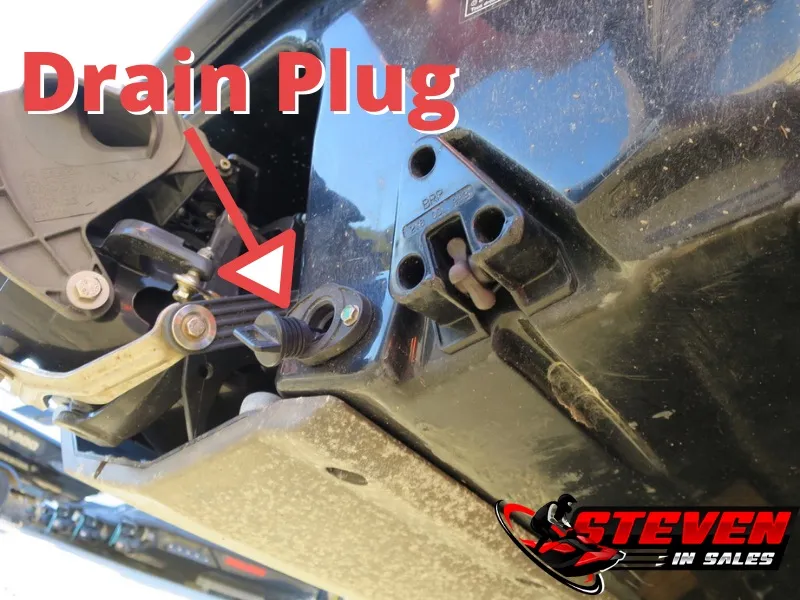
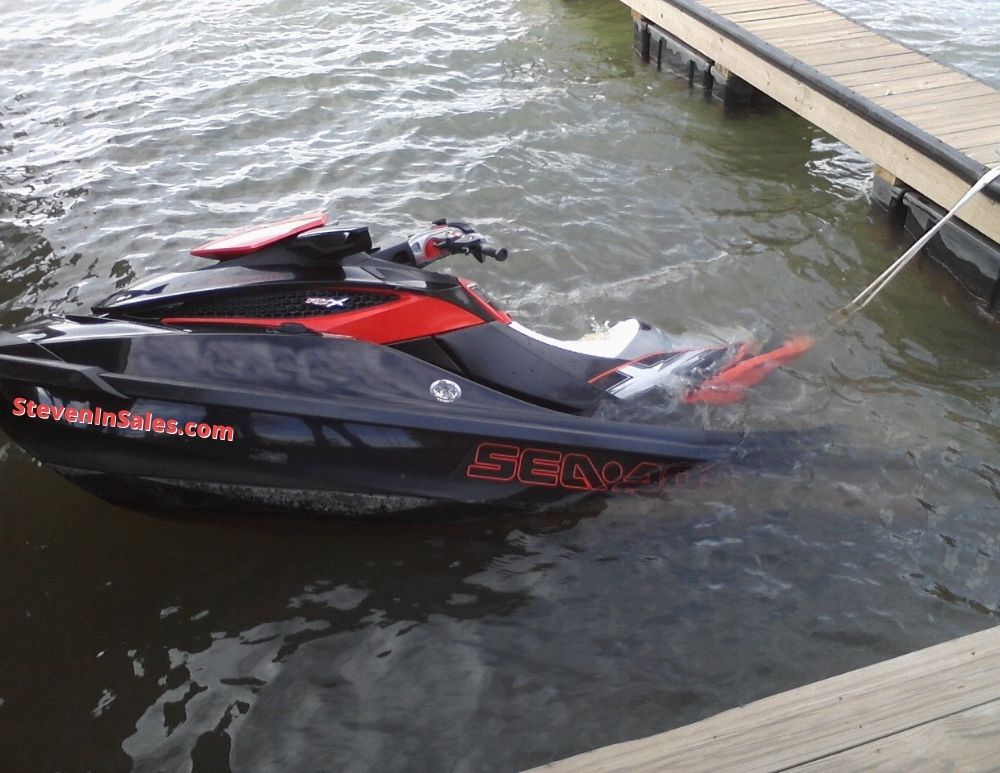
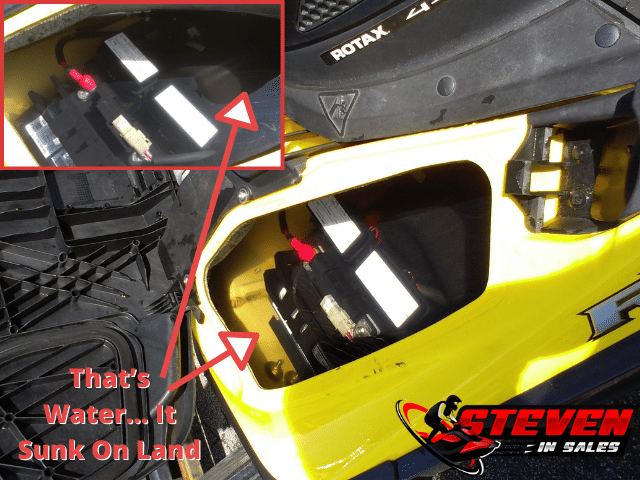
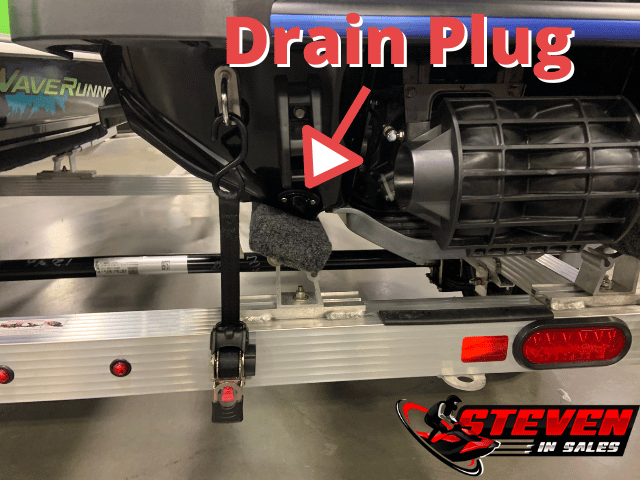
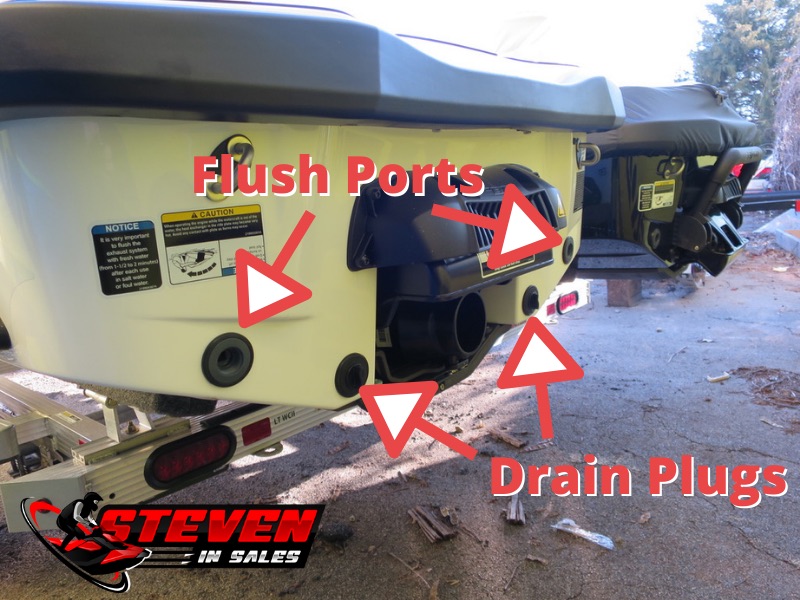
Hi Steven,
I always like coming back to check on your site – a wealth of very useful info!
Adding a bilge pump in my opinion is a good idea. With Sea Doo (I don’t know about the other brands) the trouble with the OEM bilge pump (which goes in-line with the bailer tube) is that they way they instruct you to install it has it always running when the power is on. Noisy if you are sitting fishing with the engine off and acc on, and you have to wonder how long it will last when running full time! I added in an bilge float switch and an additional waterproof switch (accessible just under the seat) so the pump could be “always on” or “auto”, i.e. activated by the bilge float switch. You need a small float switch, as there is not a lot of room down there. It also needs to be rated for the right amount of electrical current with a good waterproof wiring job!
I have also thought about wiring a loud beeper in parallel with the pump so that I know if it is running (i.e. if the ski is taking on water) as you can’t hear the pump when the motor is on. I haven’t done this yet though.